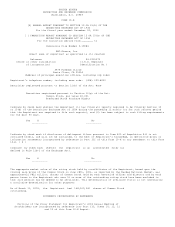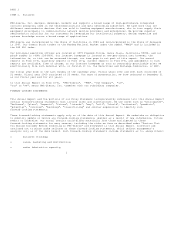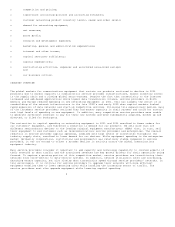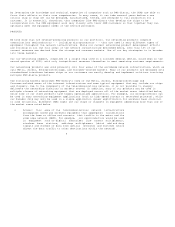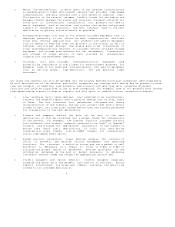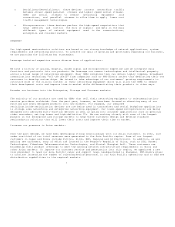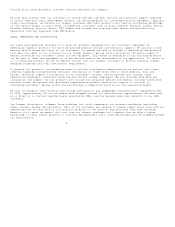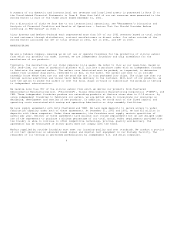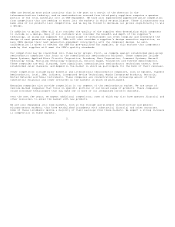Adaptec 2002 Annual Report Download - page 9
Download and view the complete annual report
Please find page 9 of the 2002 Adaptec annual report below. You can navigate through the pages in the report by either clicking on the pages listed below, or by using the keyword search tool below to find specific information within the annual report.A summary of our domestic and international net revenues and long−lived assets is presented in Note 13 to
the Consolidated Financial Statements in Item 8. More than half of our net revenues were generated in the
United States in each of the three years ended December 31, 2002.
For a discussion of risks we face due to our international operations, see "Management's Discussion and
Analysis of Financial Condition and Results of Operations − Factors That You Should Consider Before
Investing in PMC−Sierra" in Item 7.
Cisco Systems and Hewlett−Packard each represented more than 10% of our 2002 revenues based on total sales
to end customers through distributors, contract manufacturers or direct sales. Our sales outside of the
United States accounted for 45% of total revenue in 2002, 42% in 2001, and 38% in 2000.
MANUFACTURING
We are a fabless company, meaning we do not own or operate foundries for the production of silicon wafers
from which our products our made. Instead, we use independent foundries and chip assemblers for the
manufacture of our products.
Typically, the manufacture of our chips requires 12−16 weeks. We refer to this as our lead−time. Based on
this lead−time, our team of production planners will initiate a purchase order with an independent foundry
to fabricate the required wafers. The wafers once fabricated must be probed, or inspected, to determine
usable from unusable chip parts, referred to as die, on the wafer. The wafers are sent to an outside
assembly house where they are cut and the good die are in turn packaged into chips. The chips are then run
through various electrical and visual tests before delivery to the customer. With most of our products, we
have the option to probe the wafers or test the final chips in−house or subcontract the probing or testing
to independent subcontractors.
We receive more than 90% of the silicon wafers from which we derive our products from Chartered
Semiconductor Manufacturing Ltd. ("Chartered"), Taiwan Semiconductor Manufacturing Corporation ("TSMC"), and
IBM. These independent foundries produce our networking products at feature sizes down to 0.13 micron. By
using independent foundries to fabricate our wafers, we are better able to concentrate our resources on
designing, development and testing of new products. In addition, we avoid much of the fixed capital and
operating costs associated with owning and operating fabrication or chip assembly facilities.
We have supply agreements with both Chartered and TSMC. We have made deposits to secure access to wafer
fabrication capacity under both of these agreements. At December 31, 2002 and 2001, we had $22 million in
deposits with these companies. Under these agreements, the foundries must supply certain quantities of
wafers per year. Neither of these agreements have minimum unit volume requirements but we are obliged under
one of the agreements to purchase a minimum percentage of our total annual wafer requirements provided that
the foundry is able to continue to offer competitive technology, pricing, quality and delivery. The
agreements may be terminated if either party does not comply with the terms.
Wafers supplied by outside foundries must meet our incoming quality and test standards. We conduct a portion
of our test operations on advanced mixed signal and digital test equipment in our Burnaby facility. The
remainder of our testing is performed predominantly by independent U.S. and Asian companies.
9

